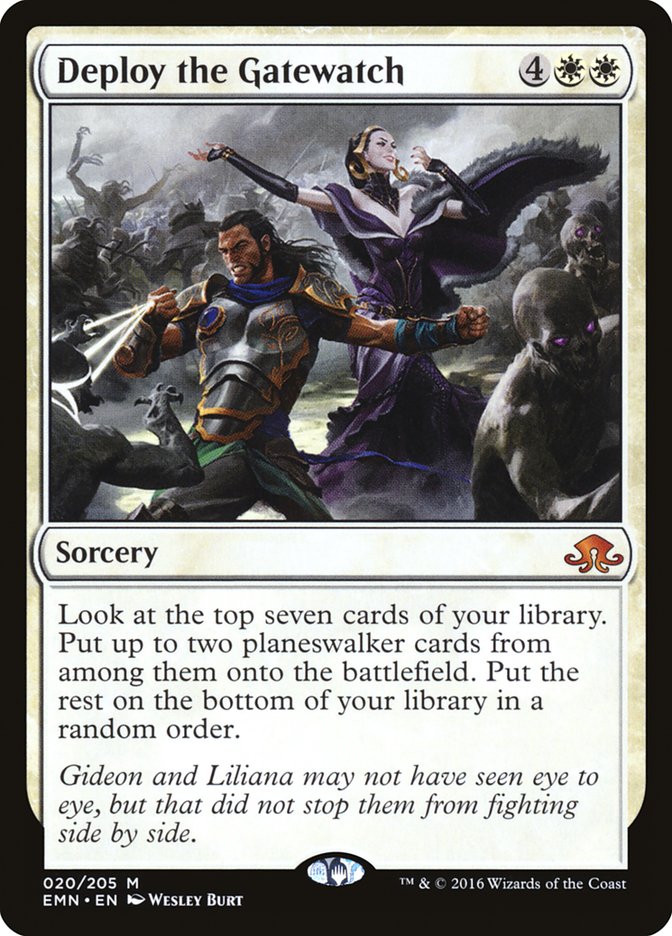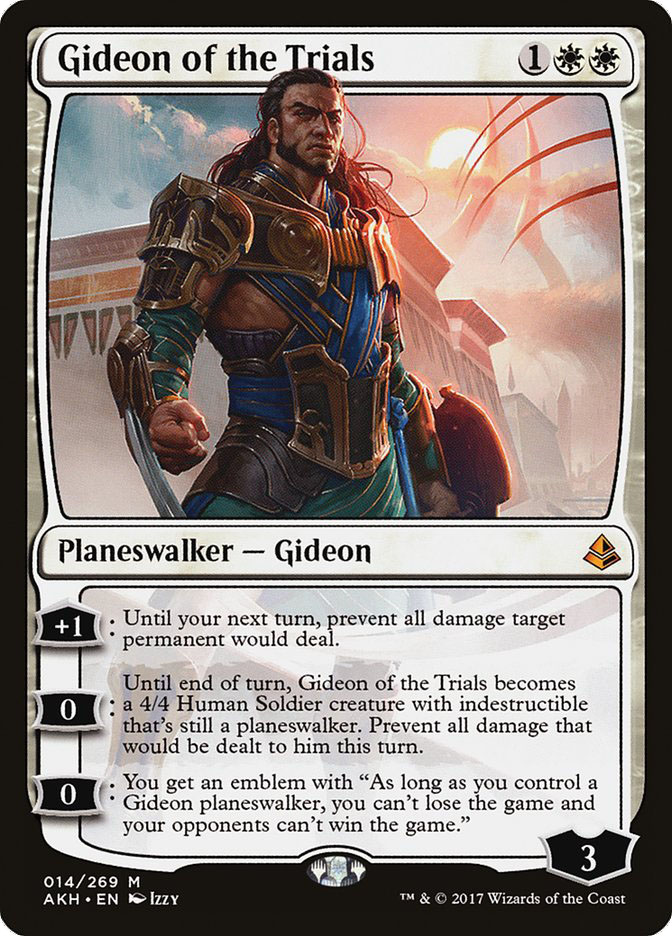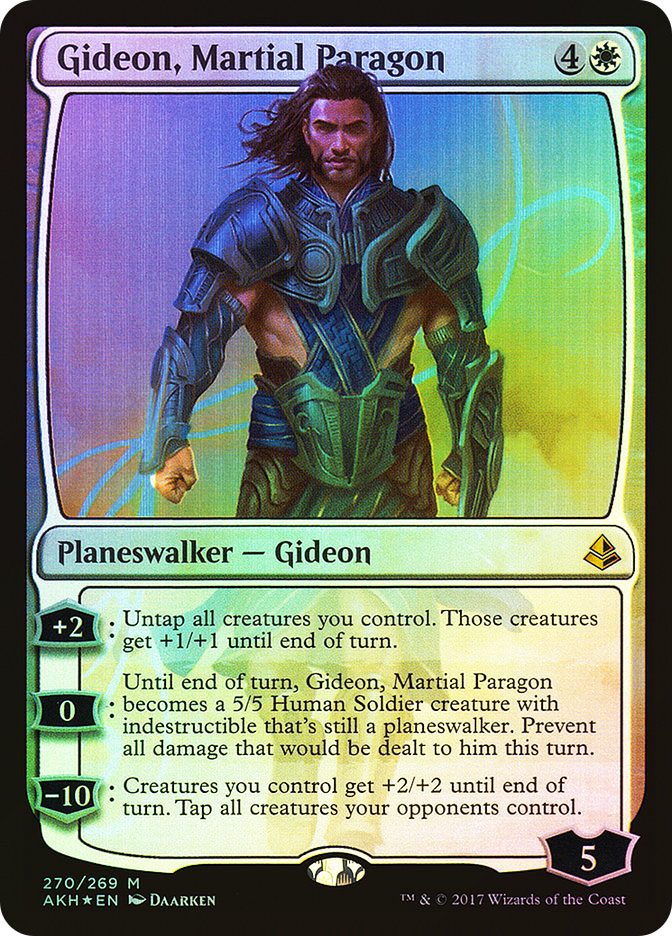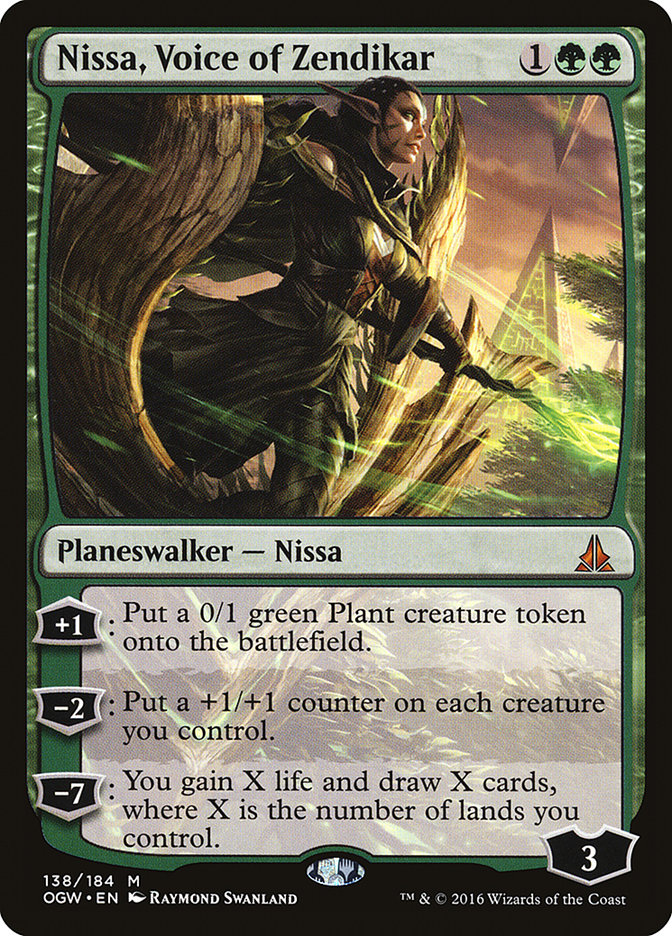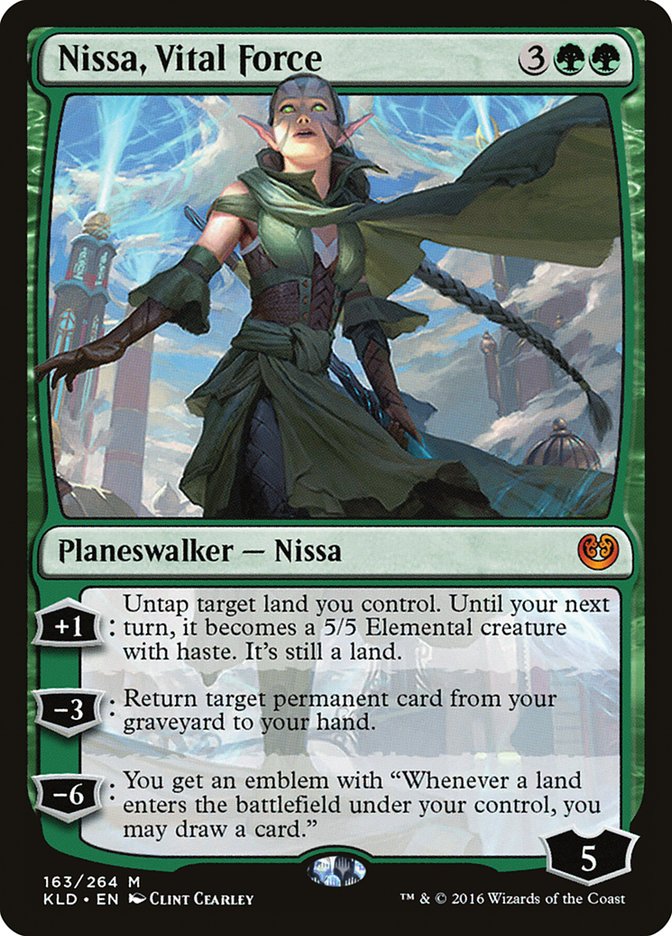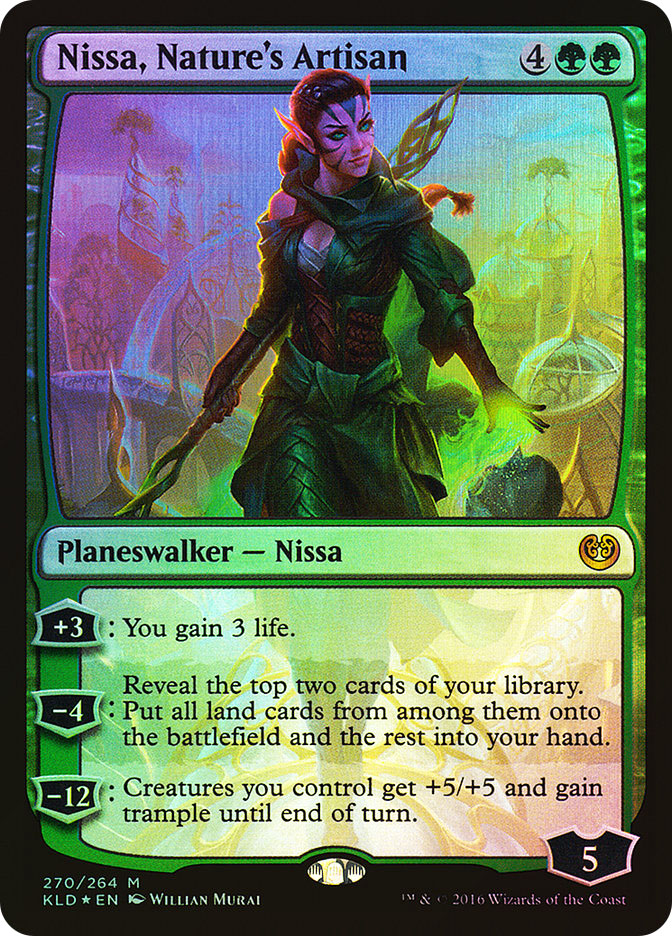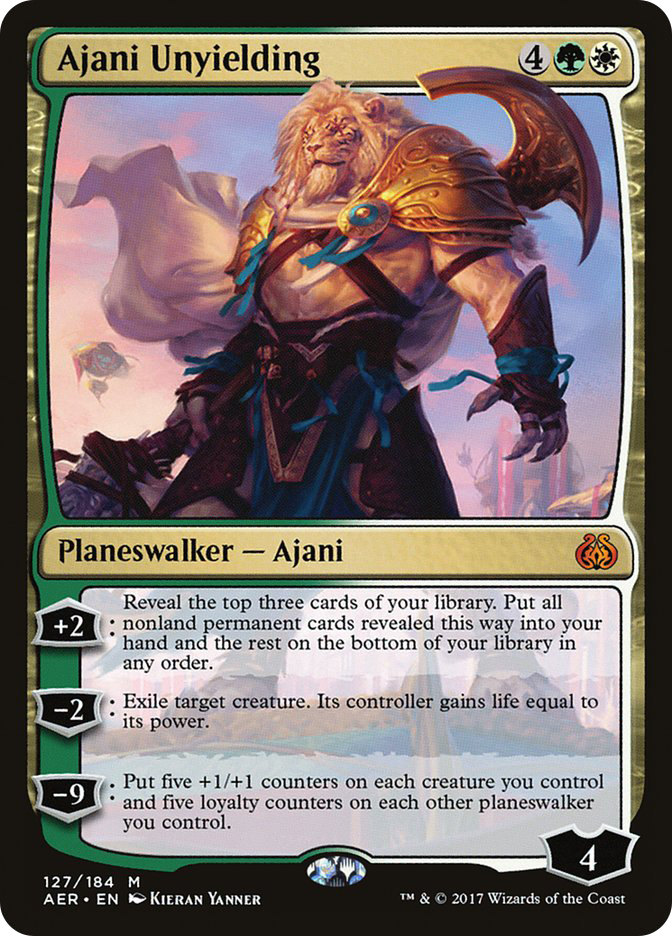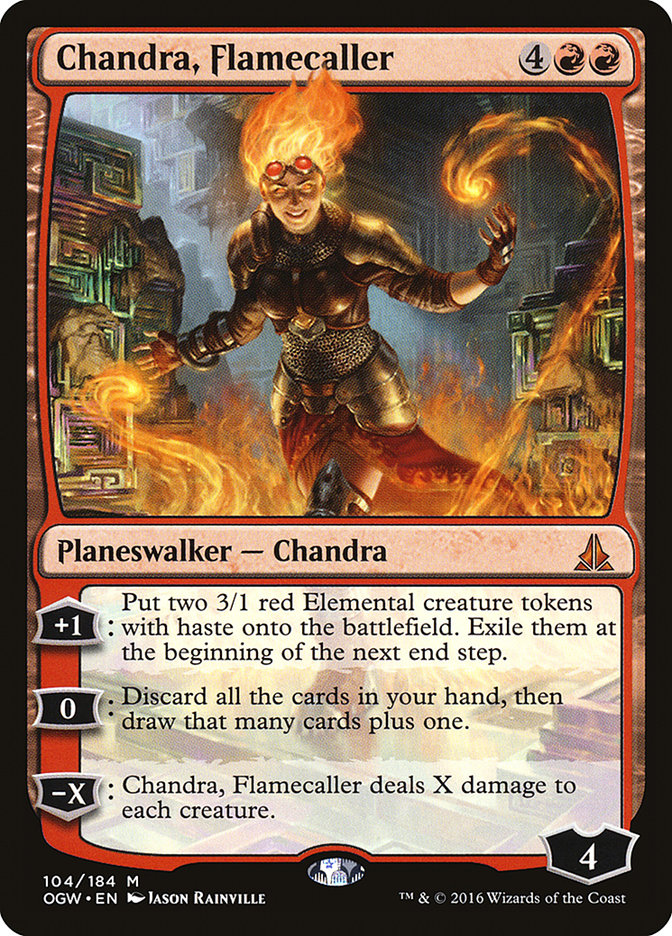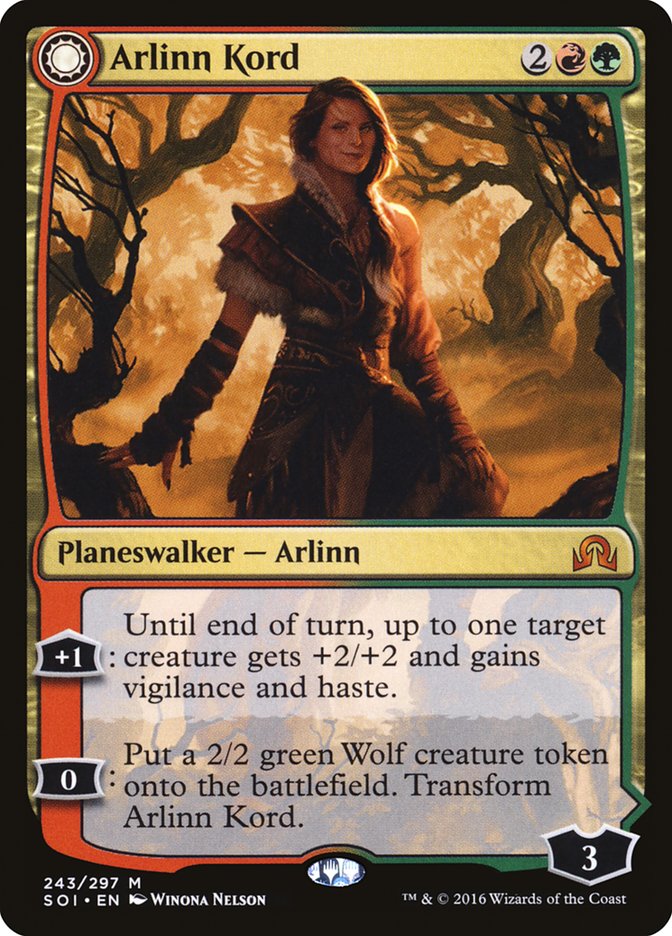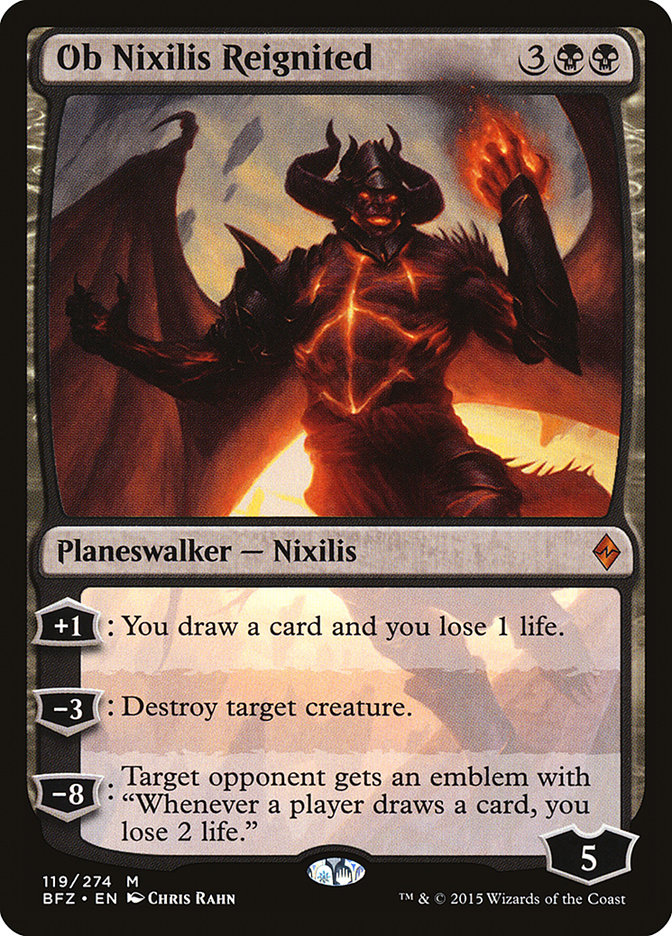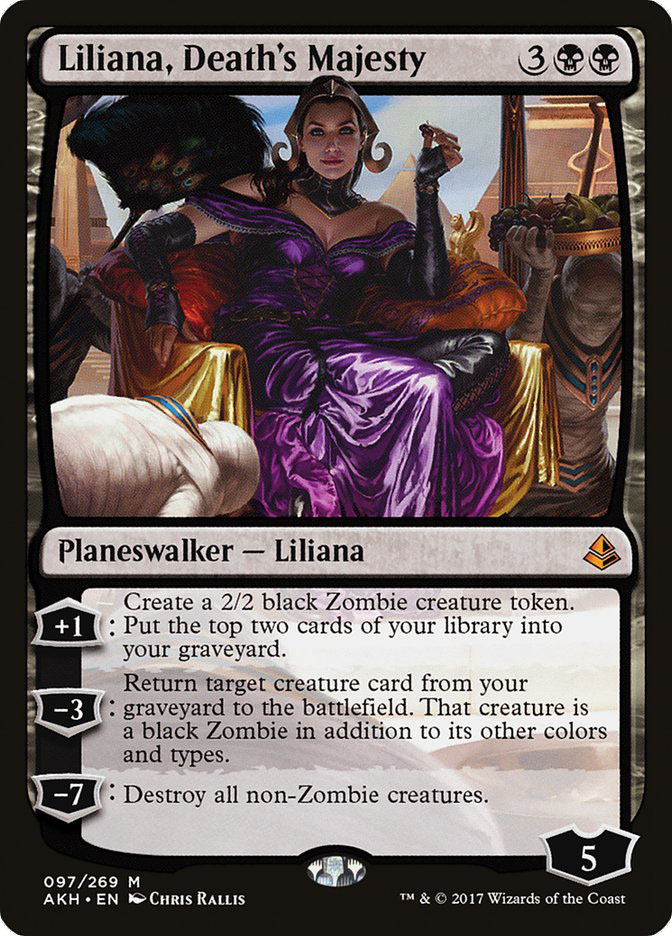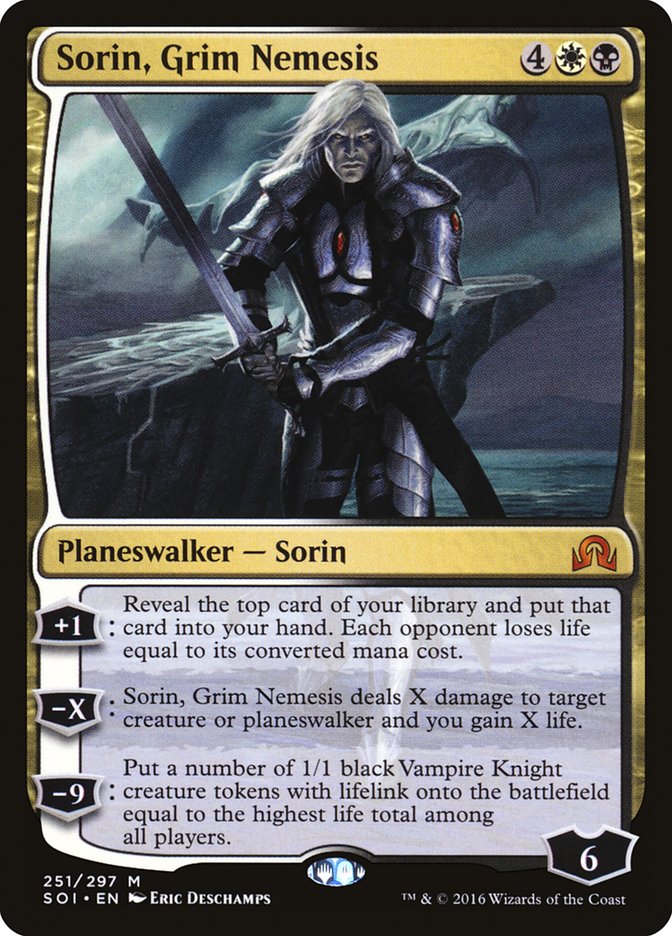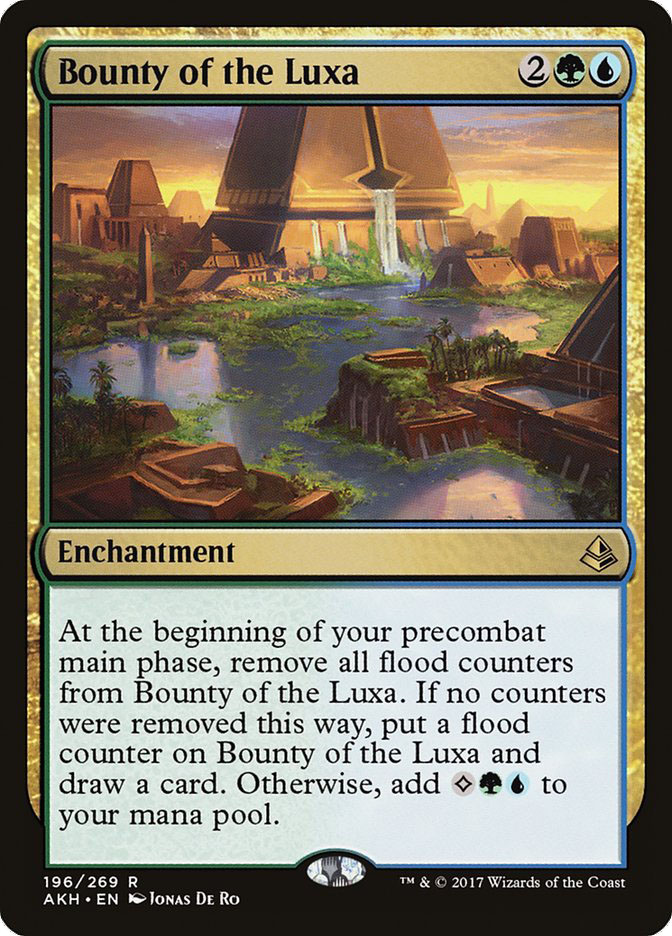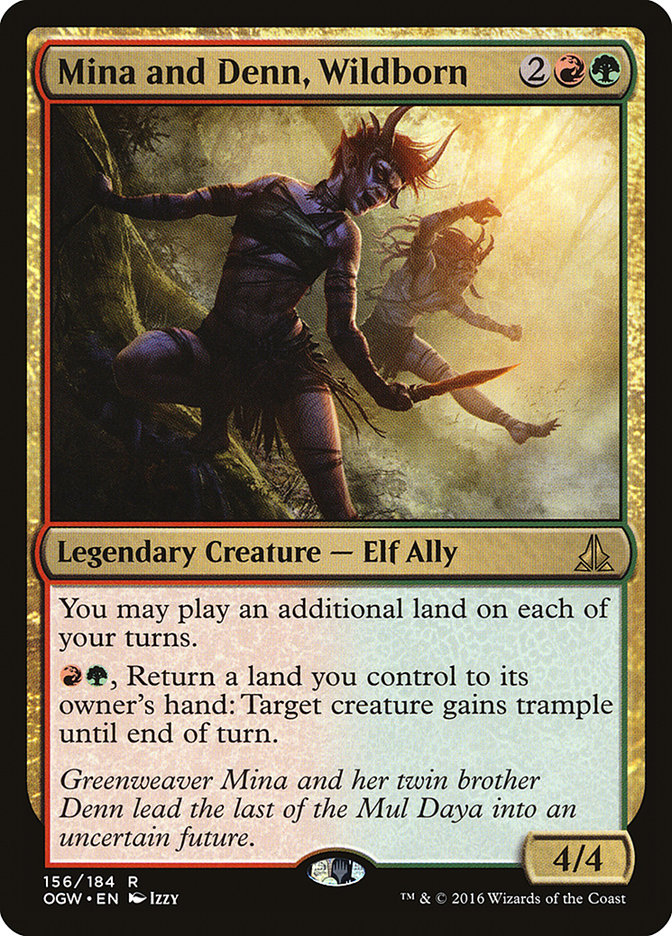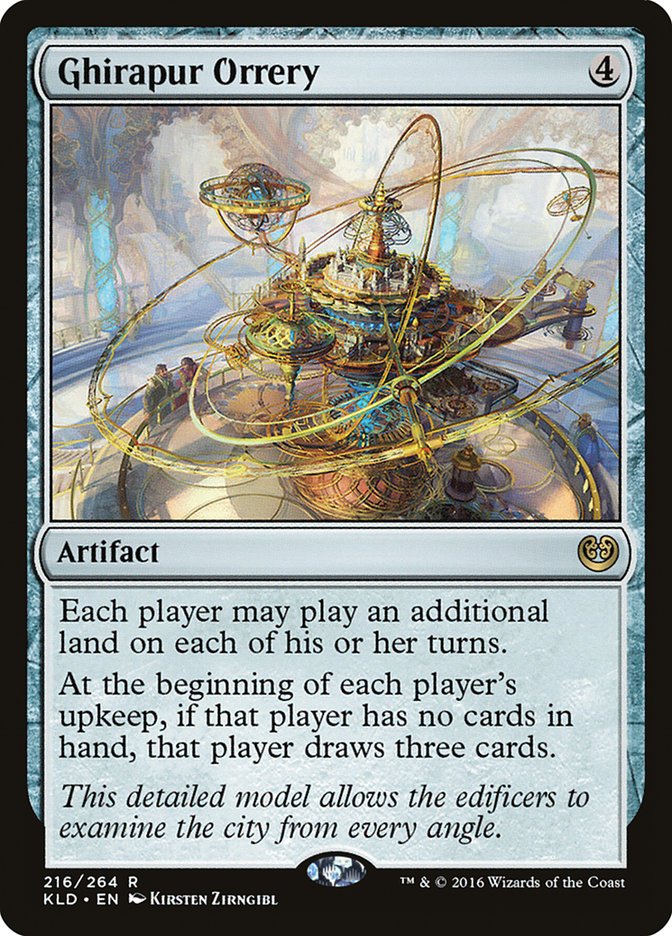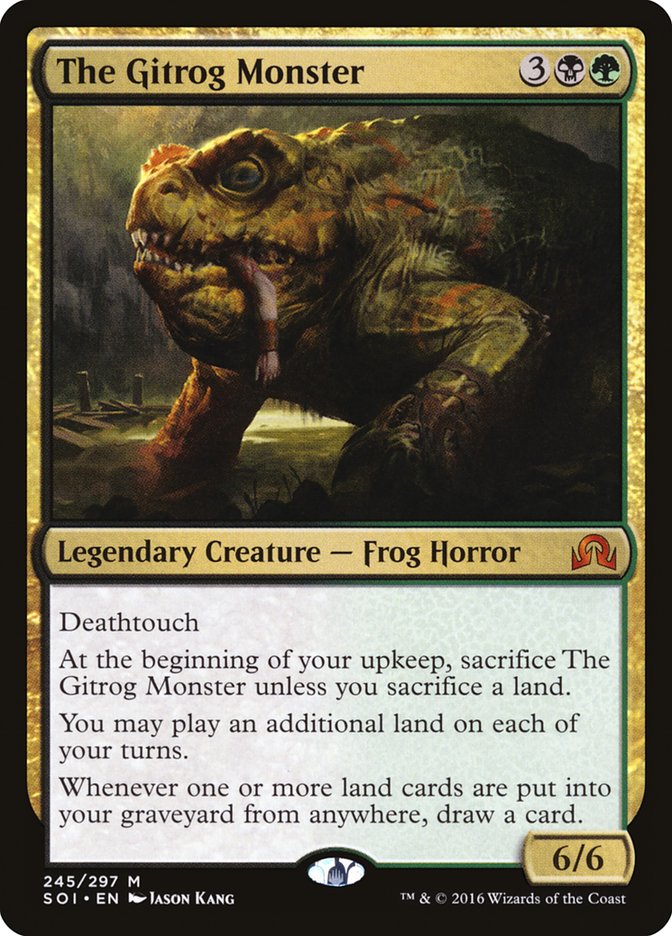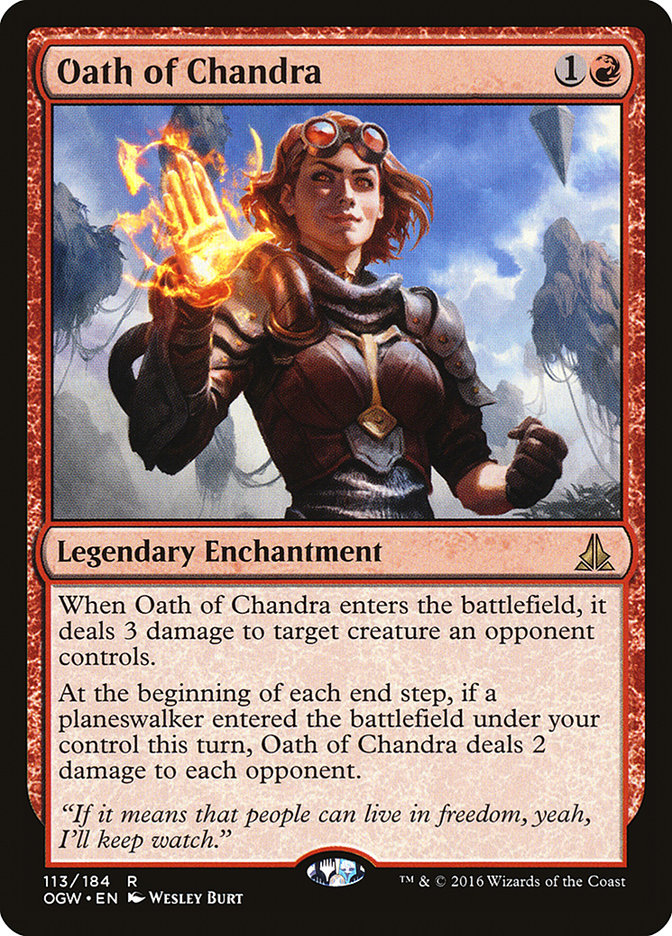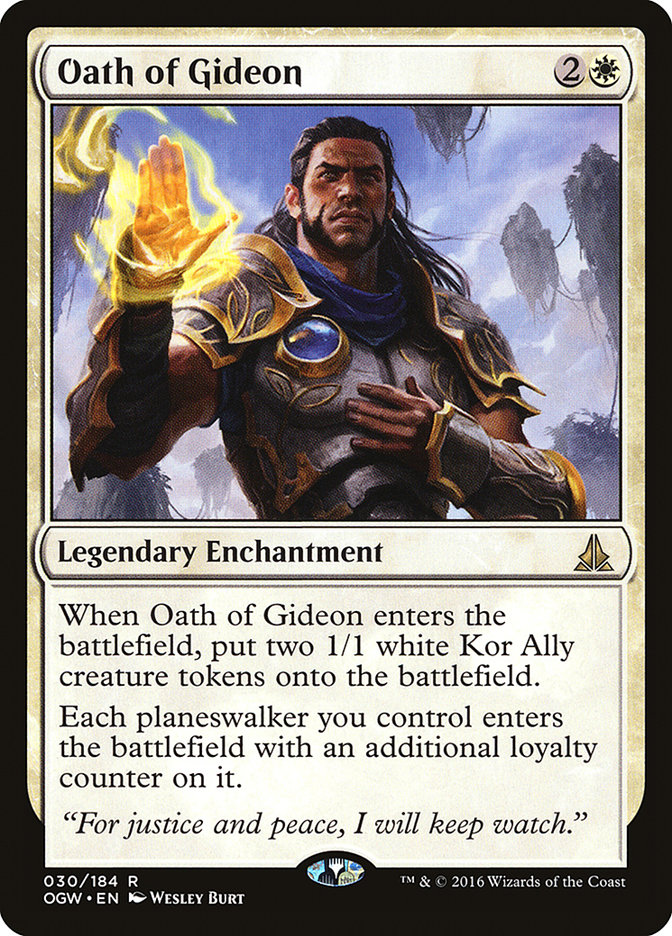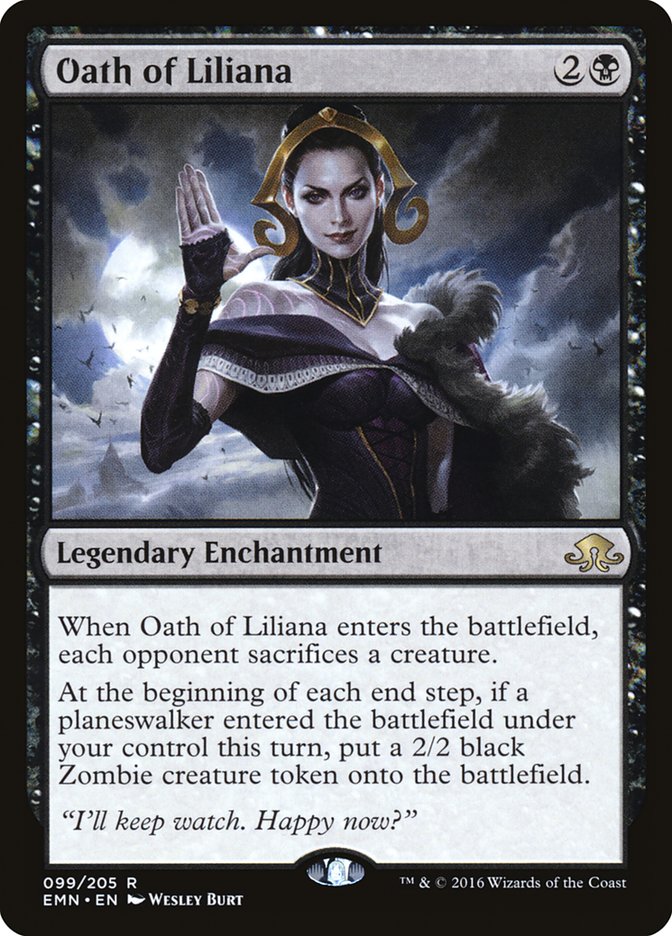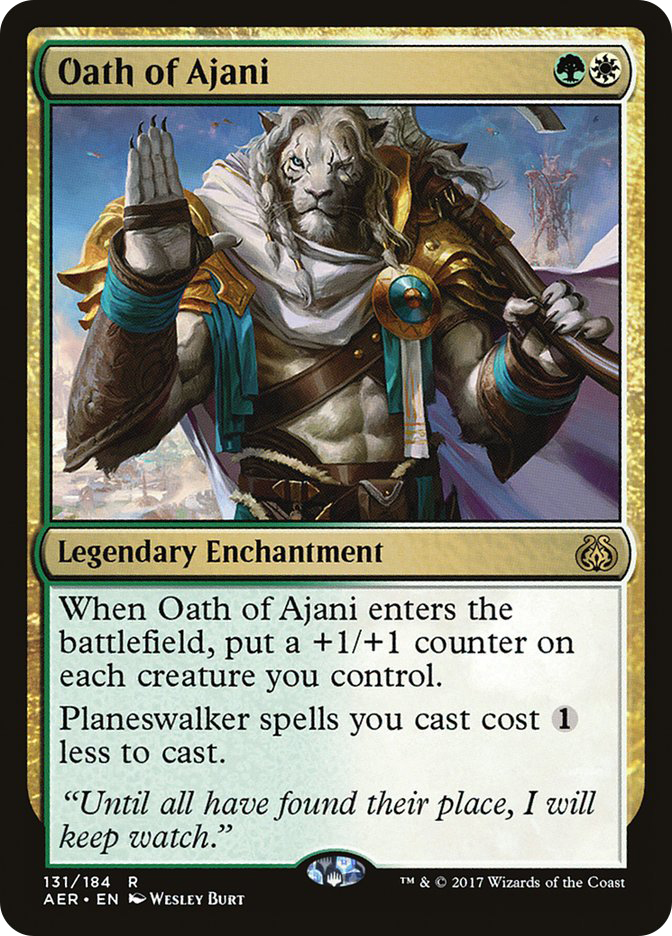Does anyone else feel like the goalposts keep moving? With Standard seeing yet another round of bannings and with the very sweet-looking Hour of Devastation right around the corner, it’s hard to know where to direct our metgame-busting lasers. Lest you think that is a complaint, let me assure you that I am totally on board with each of the bannings that has taken place, and Standard should (hopefully) be healthier moving forward.
Sadly, the decision to ban Aetherworks Marvel and not Ulamog, the Ceaseless Hunger has deprived me of the chance to play the deck I had been thinking about, Deploy the Gatewatch in a Marvel shell.
These Spikes just have to ruin all our fun with their optimal strategies and their tuning. That said, Deploy the Gatewatch remains a powerful option for the few months it has left in Standard and is poised to get even better once Nicol Bolas, God-Pharaoh joins the fray.
The question around Deploy has never been whether or not it is a powerful card; that much is clear, as you will almost always get value for your investment. Rather, the question has been whether or not the deckbuilding cost is too high in terms of the number of planeswalkers required. What other cards do we need to include to make the deck playable and the pilot able to make it to six mana before the impact of two planeswalkers is insignificant?
Step 1: What Planeswalkers Do You Want?
If we’re playing Deploy the Gatewatch, we’re playing planeswalkers. I mean, we don’t have to, I guess, but not doing so seems pretty poor. Smarter people than me have done the maths on probabilities and such, and really it’s not my forte. I just want to kill people with virtually unkillable permanents. I am a simple man who enjoys simple pleasures. I want to be jamming anything between sixteen and twenty planeswalkers in my maindeck to find a balance between “can win without Deploy” and “will win when casting Deploy.”
Number isn’t the question, though. Selection is the far more important decision here, and we have little to inform those choices. White is clearly going to need a spot in the deck so that, you know, we can actually cast Deploy the Gatewatch. Again, we technically don’t have to…but I already made that joke. We’re quite happy to go with white anyway, as it gives us access to these options:
All Gideon, all the time. Gideon, Ally of Zendikar is a definite; it is probably the best planeswalker in the format and the one most likely to win the game on its own. Gideon of the Trials is likely to earn a slot if for no other reason than its ability to really blunt the early-game of creature-based decks. Gideon, Martial Paragon is a one-of at best, but is a very good card that a lot of people will underrate.
If we go gold, we also have Nahiri, the Harbinger, but it’s not clear that she would make the cut. While Nahiri is a powerful option that allows for a lot of card filtering, her abilities don’t fit the rest of what the deck wants to be doing. Aside from encouraging us to play a large creature for her ultimate to hit, the -2 ability won’t often do enough to turn the tide of the game. Generally I want to avoid playing a card that only has one-and-a-half abilities that are relevant to our gameplan.
The second slam-dunk choice is easily green. Oath of Nissa is going to be vital to actually casting our spells regularly, to say nothing of the pseudo-Impulse ability. As we’re almost definitely also in three or more colors, green also provides us the best fixing options. That in itself is a decision to make, which we can discuss later. On the planeswalker front, we find ourselves looking once again at a lot of one character…
Nissa, Voice of Zendikar provides us with much-needed early defense and can turn our mana creatures or tokens into actual threats later in the game. She is not only a sure thing but probably wants to be present in multiples. Nissa, Vital Force will be incredibly important later in the game to recur lost planeswalkers, but is less powerful in multiples. We won’t be playing Nissa, Nature’s Artisan, I’m afraid. Ajani Unyielding will depend on the rest of the deck’s construction, as it can draw us a lot of cards in some builds but is far less useful in others.
The other colors are not so easy. Blue does not offer much right now. Dovin Baan has little impact on the battlefield; Jace, Unraveler of Secrets is too slow to be useful; and Saheeli Rai lost her only friend in the format. Tamiyo, Field Researcher and Nissa, Steward of Elements are both powerful pulls in the blue direction, but the fact that the latter is a bad choice for Deploy the Gatewatch and the former is ill-suited to an aggressive format is enough to dissuade me. Once our overlord Nicol Bolas, God-Pharaoh arrives triumphantly in the format, we might have enough to move the needle, but we’re looking at three colors which aren’t the primary ones in our deck.
The choice then is between red and black, or both of them. Red gives us these options:
The first two are obviously high-quality tournament cards, and Chandra, Flamecaller gives us value for our mana investment on its own in addition to clearing annoying creatures off the battlefield. Arlinn Kord is the stretch here, but her ability to alternate between providing a blocker and shooting an opposing creature can help us in the early-game, and her buff abilities (on either side) are solid choices when we want to punch through. Red also means we can play Oath of Chandra, giving us both chip damage and removal.
Black, on the other hand, is the king of spot removal and warrants consideration for that fact alone. On the planeswalker front, it gets a little tricky:
All of these options are without a doubt very powerful, but arguably do not fit our strategy. Liliana (either version) is at her best in a deck that is focused on the graveyard, and neither of them interacts well with other planeswalkers (the flavor is real). Ob Nixilis Reignited is a powerful option in grindy matches, as he provides a stream of value, but rarely makes it into maindecks. Sorin I would be happy to play, especially as he is eminently splashable in a deck that both wants Oath of Nissa and some form of ramp/fixing hybrid, but that is an argument in favor of the card and not the color.
As it stands, I would lean to Naya splashing black for Sorin and possibly some sideboard cards and Anguished Unmaking. Hour of Devastation might change that, but I might also just shoehorn the Bolas in there and hope for the best. Nothing ventured, nothing gained!
Ramp and Fixing
Casting six-mana spells might be easier in Standard without the threat of a giant extradimensional beast eating your face on turn 4, but it is still a lot to ask. Add in the significant demands on our mana that this deck is making and you quickly determine both why we chose green and why we need to be able to smooth our mana.
As we said, this deck is mostly unplayable without Oath of Nissa. That we might have to put a Deploy the Gatewatch on the bottom of our deck is unfortunate, but in the early turns, we don’t really want to draw one, and in the late turns we often won’t need to cast the Oath. It’s a trade-off, really. We then have a choice between creature-based and noncreature-based fixing. There are of course merits to both; creatures can attack but are also far more vulnerable to removal. That said, with cards like Dissenter’s Deliverance seeing maindeck play thanks to cycling, we might also want to avoid artifact-based ramp like Corrupted Grafstone. That leaves us with Gift of Paradise, spells like Harvest Season or Natural Connection, or even something like Bounty of the Luxa.
Mmm, delicious bounty.
Channeler Initiate is one card that has made me re-evaluate my stance on wanting to avoid creatures. I am very fond of that card and the dual role it can play, especially in a deck where we can dump the -1/-1 counters on a Plant token if needed in the late-game. The issue is in the rest of the deck, as Naga Vitalist is just not a great card and Servant of the Conduit almost demands that we find additional ways to accrue energy. The latter is pretty doable, as we can easily find slots for Aether Hub and Attune with Aether, and Harnessed Lightning is a solid removal option.
Gift of Paradise might not seem like a great card, but it ramps the same amount as a mana creature and will also often negate the same amount of damage as a blocker in the early-game. It also makes us take a look at Kiora, Master of the Depths…but not a long one, as that card is not very good. Spell-based ramp has the additional advantage of thinning your deck but also means you have to play basic lands in many cases. Natural Connection is a strange card but one that I expected to see more play than it has, both because of landfall and because ramping at instant speed is so unusual.
It beats Harvest Season, which is at its best in decks with more creatures, and Spring, which is just not good enough if we’re not reliably casting the back half. There is one creature that we might want to consider here, and it has the speed bump aspect going for it too: Primal Druid. Like Natural Connection, I think this card is far better than it seems to be, but in this case I am happy to include it in our deck. It is a miserable late draw, but so is any ramp spell, and at least Druid can block a Torrential Gearhulk.
It’s also worth taking a look, if a brief one, at effects that let us play extra lands. We currently have three in Standard:
As much as I want it to be a thing, Ghirapur Orrery is a trap. The benefits are far outweighed by the terrifying prospect of giving your opponent free cards, and our deck is not going to be well-equipped to answer them all. Mina and Denn,Wildborn is not at home here either. If R/G Energy Monsters takes off in the wake of the latest banning, we might well see this card start to slip in as a mirror-breaker, but right now it does not do enough. We could potentially play The Gitrog Monster, but I do worry about the cost of keeping it around.
Sweepers? Oaths? Spot Removal?
The biggest problem with planning a Deploy deck is that you quickly run out of slots for things that are not planeswalkers and lands. While it might be fun to draw a game-ending bomb every turn, we do need to actually avoid dying. Striking the balance between cool planeswalkers and boring utility is neither easy nor fun, but it is required.
The Oath cycle was designed to be played in this sort of deck. It is a given that we are playing Oath of Nissa, but how do the other five stack up? If we omit blue from the running based on our discussion above, this is my rough order of likelihood for inclusion:
The first one will not cause much disagreement, I think, but Gideon over Liliana might. My take on it is that the sacrifice effect will very often be less relevant than the two blockers. The free Zombie token is great and probably better than one extra loyalty, but not by enough. Ideally we would play all three, but mana is a thing.
The question of sweepers versus spot removal is a much more interesting one. We discussed Harnessed Lightning above, and if we go with black over red, obviously the balance tips heavily to spot removal, but my personal preference is to play Fumigate. No questions asked, no choices to make: just blow up all the creatures and gain a little life. If Archangel Avacyn makes a return to the scene (as is likely, I’m afraid), that will tip the balance firmly in the other direction. Yahenni’s Expertise is an interesting thought and interacts well with other things we want to do (like casting Oaths), but is not enough on its own, as it won’t remove many of the problem creatures we are likely to see.
One thing to keep in mind is that we will often be able to win games just by casting a planeswalker on turns 4, 5, and 6 and just overwhelming our opponent with free value. The late-game of these sorts of decks is among the most powerful in Standard because of the amount of things they can do without spending mana and because planeswalkers are hard to beat. The main weakness is playing them into an already-developed battlefield, which is why I am so eager to play sweepers in the list.
That’s all we have for this week, folks. As always, thanks for stopping by. Next week I will be diving into some of the early previews, as there is already some exciting stuff being shown off. Until next time…Brew On!


